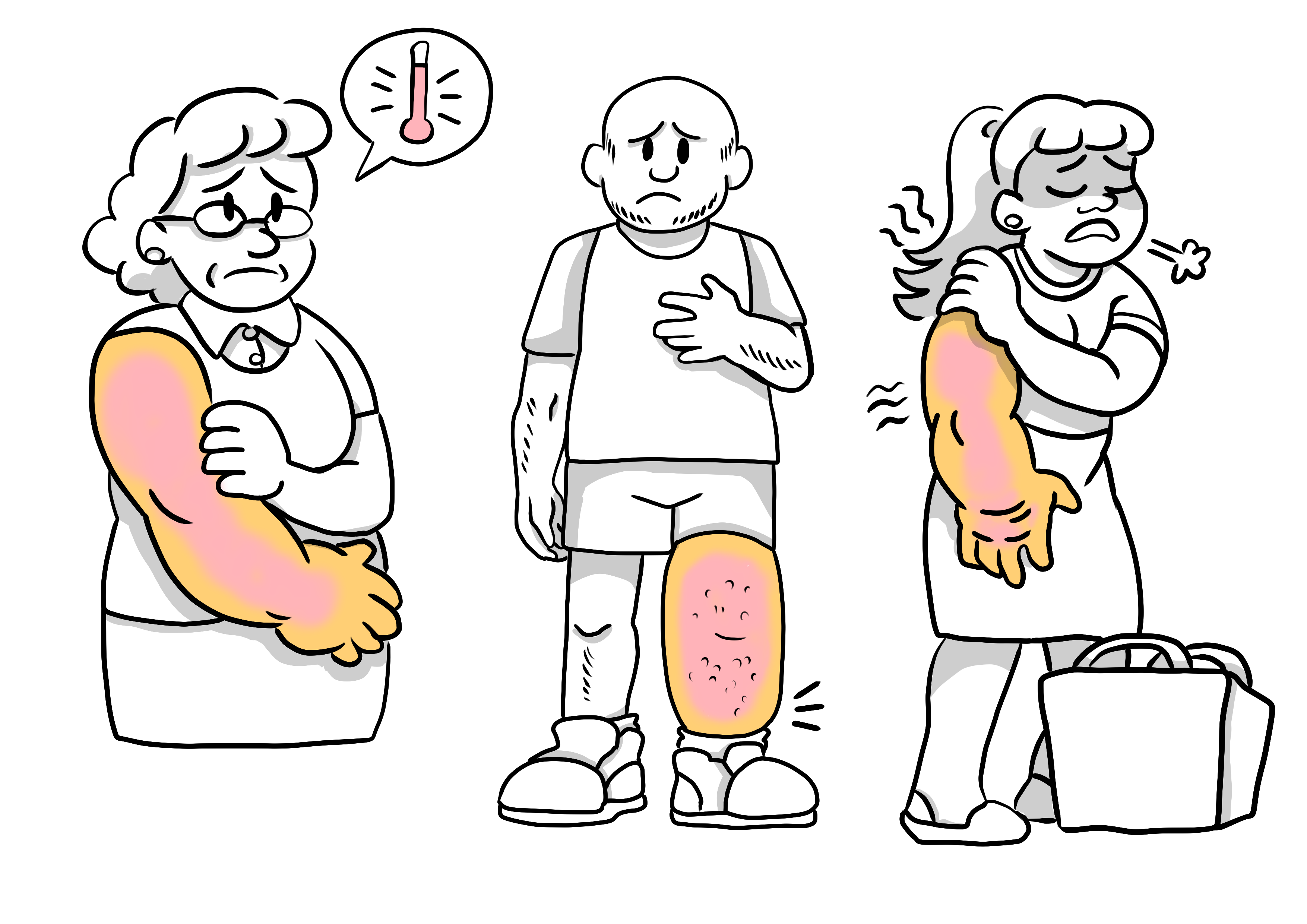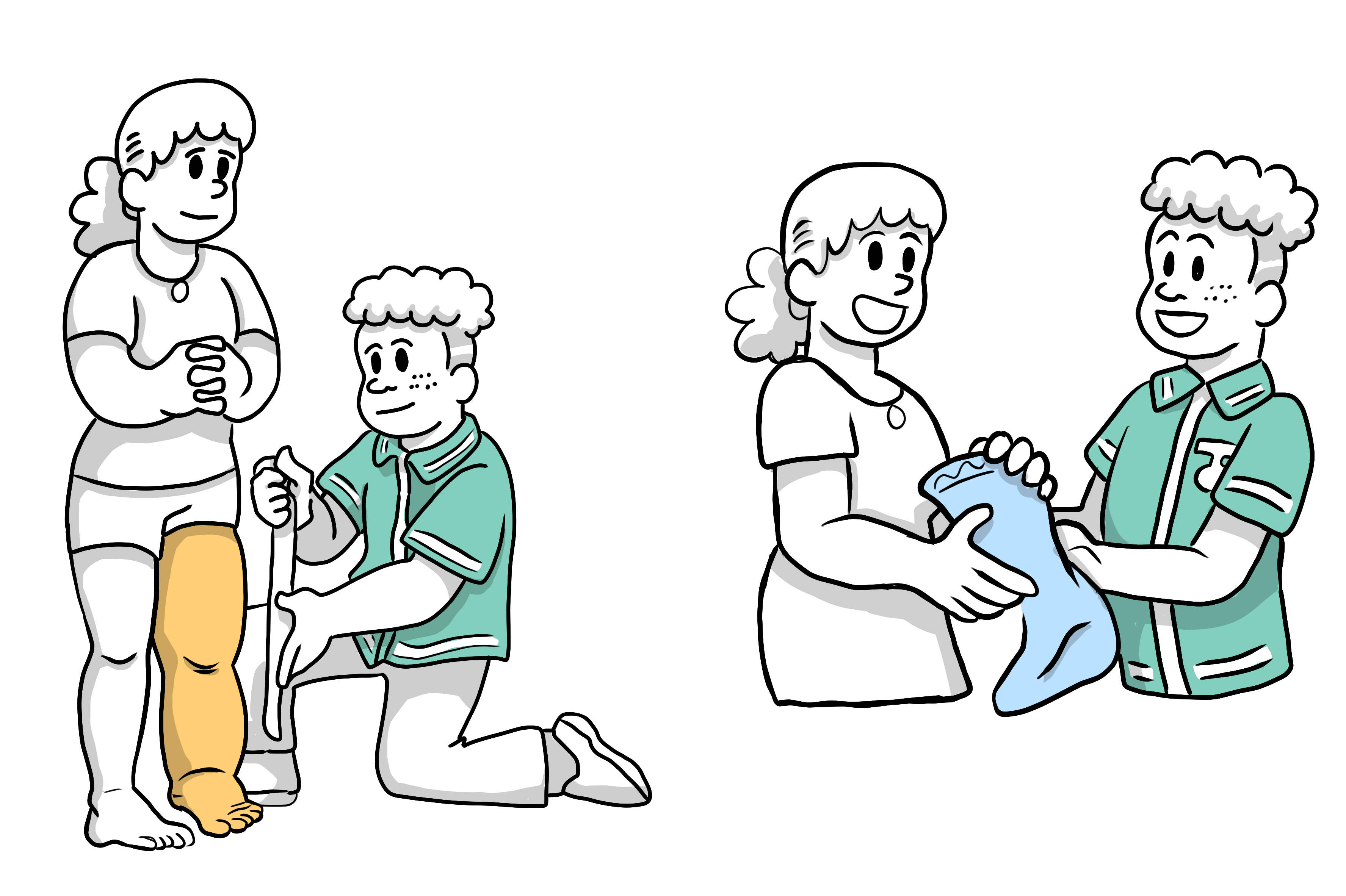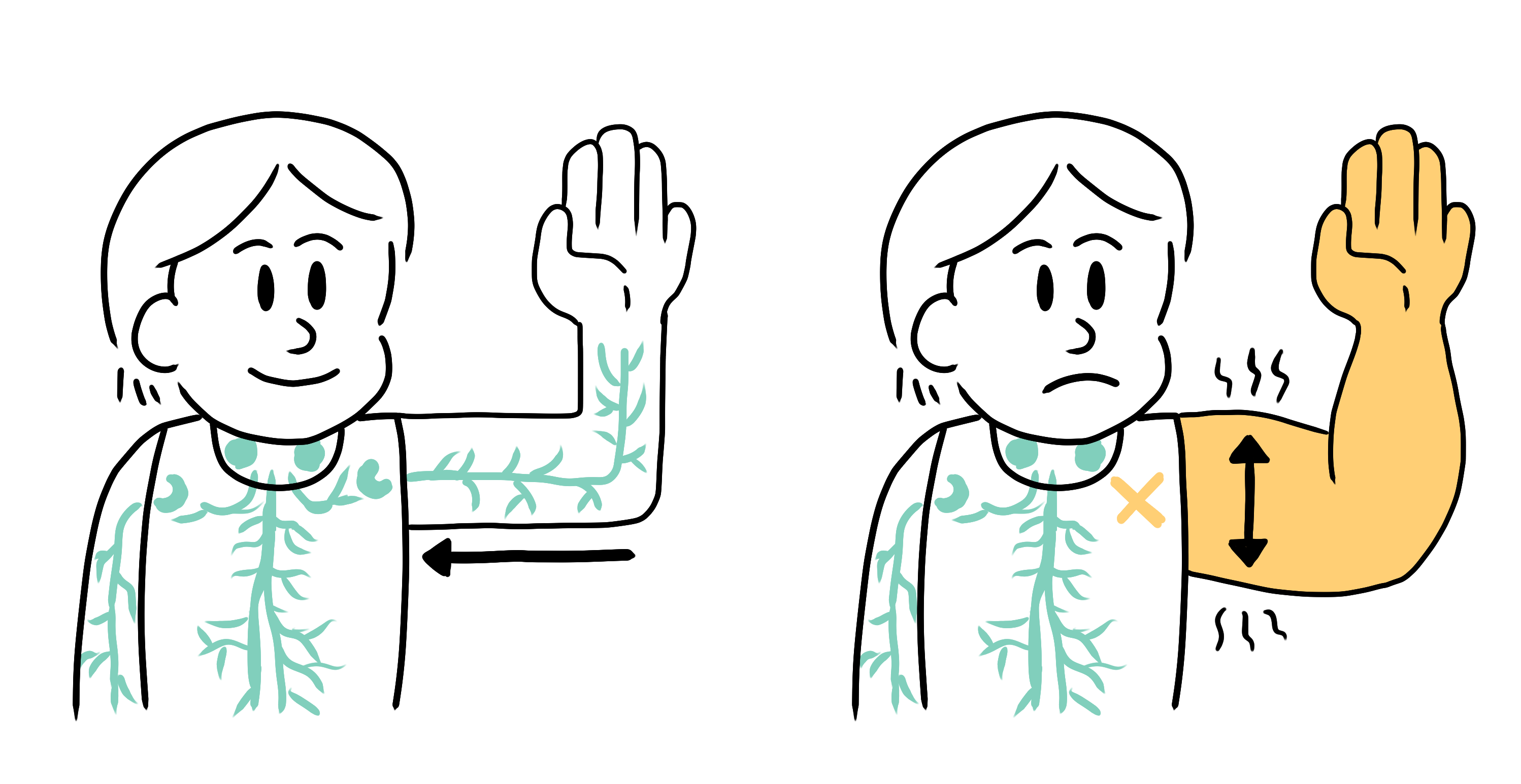What is Lymphoedema?
Lymphoedema is a chronic, progressive swelling that can occur in any part of the body but is most common in the limbs. It occurs because the lymphatic system is struggling with the normal drainage of fluid from the tissues back into the circulation.
Why does it happen?
Normally, our arteries take blood, oxygen and nutrients around the body and feed our cells to help them work properly. In the tissues, once the cells have created energy from oxygen and nutrients, we create waste products which form part of the fluid in the tissues. The lymphatic system is a passive system, which will normally take this fluid and transport it back into the circulation, via a network of tiny lymph vessels and lymph nodes.
Once the fluid is in the lymphatic system it is called lymph, it will be filtered during its journey and if any bacteria are present the lymphatic system will try to prevent any infection from occurring. If the lymphatic system is not properly formed is damaged or we are not moving around enough it will not filter fluid properly and a buildup will occur in the tissues resulting in swelling.

How does it affect me?
In the early stages of lymphoedema you may notice heaviness and aching. The limb size will increase but may reduce again overnight but in later stages may not reduce.
You may also notice a change in shape or the texture of the tissues, the limb may feel warm, and you will be more prone to infection in the swollen area. Depending on the severity of the symptoms it may influence your day-to-day life.
What can I do?
Your therapist will outline a treatment plan for your lymphoedema that could include many different self-treatments. Those that should form part of any selfcare regime are described in this leaflet. Once properly managed and with your continuing care, the effect of lymphoedema on your daily life can be minimised.

Manual Lymphatic Drainage
MLD or SLD (Self/simple lymphatic drainage) is a series of hand movements designed to stretch the skin and empty the lymph nodes. This creates changes in tissue pressure which help to move fluid from the tissues into the small lymphatic vessels, which in turn will encourage drainage of lymph to an area where it can flow more freely.
MLD should be tailored to your specific swelling to aid stimulation of the lymphatic system and the transport of immune active cells vital to the body’s defences and removal of waste products.

Exercise
Any form of movement will create changes in tissue pressure, even more so when wearing compression to encourage fluid to move from the tissues into the lymphatic system. This helps to reduce swelling and in combination with muscle contractions will stimulate the overall circulatory system to function effectively.
Exercise also helps in maintaining full range of movement of affected limbs and aids mental and physical well-being. It is important to discuss types of exercise with your therapist and find a regime that suits you as an individual.

Compression Garments
Compression garments, such as a sleeve for an arm or a stocking for a leg, are an important way of controlling lymphoedema. They put pressure on tissues to stop fluid build-up and encourage fluid to drain.
Your compression garment should be fitted by a specialist to make sure it’s effective. If it’s too loose, it won’t help with drainage. If it’s too tight, it could restrict blood flow. Your lymphoedema specialist will select the type of garment and the grade of pressure appropriate for you. They will also explain how to put on and remove the garment.
Need more help?
The LymphShop Blog and Newsletter features helpful articles clinical experts and patients.
We recommend the Lymphoedema Support Network.
"The Lymphoedema Support Network represents, supports and empowers people affected by lymphoedema, promotes awareness of the condition and campaigns for appropriate, equitable treatment for all."


